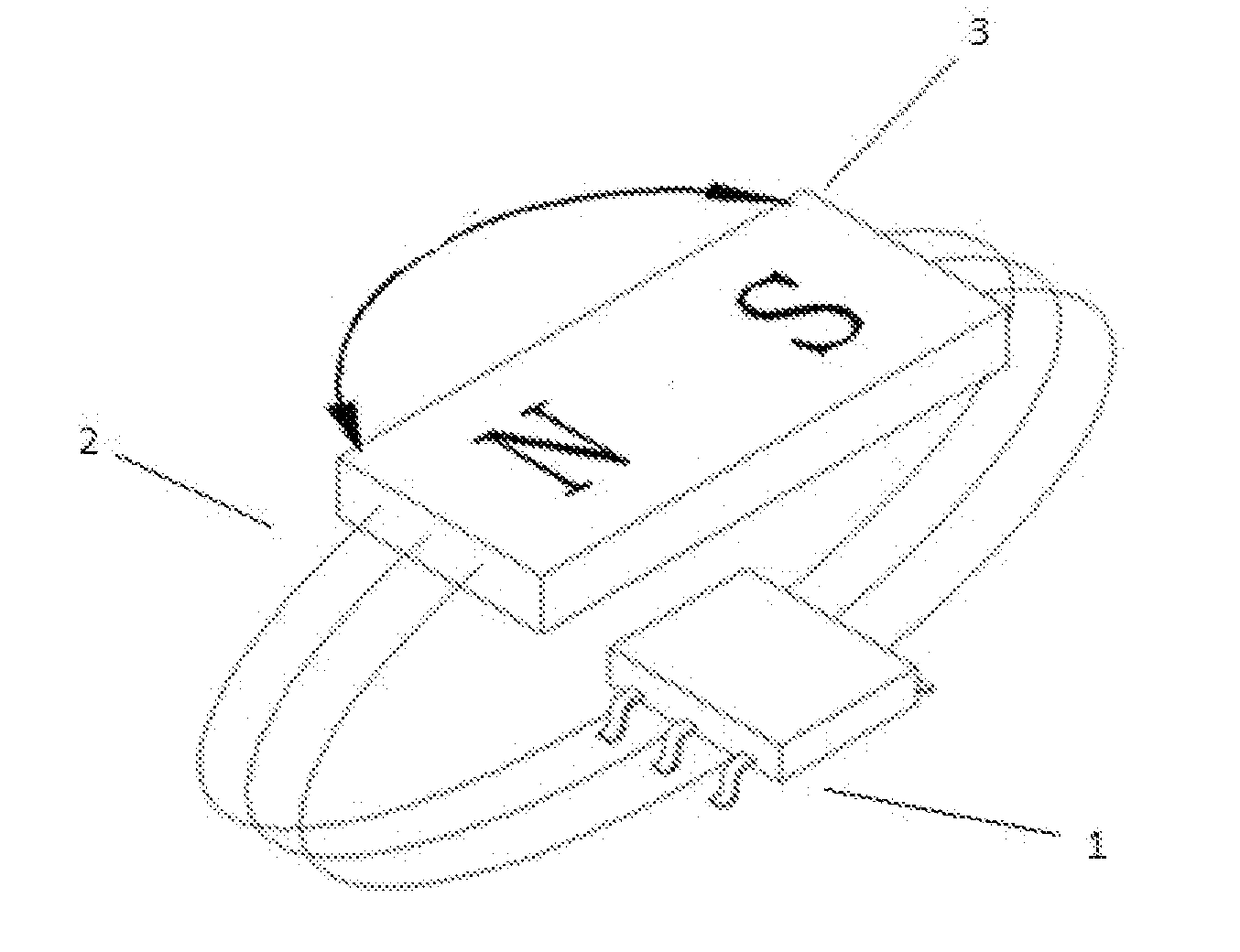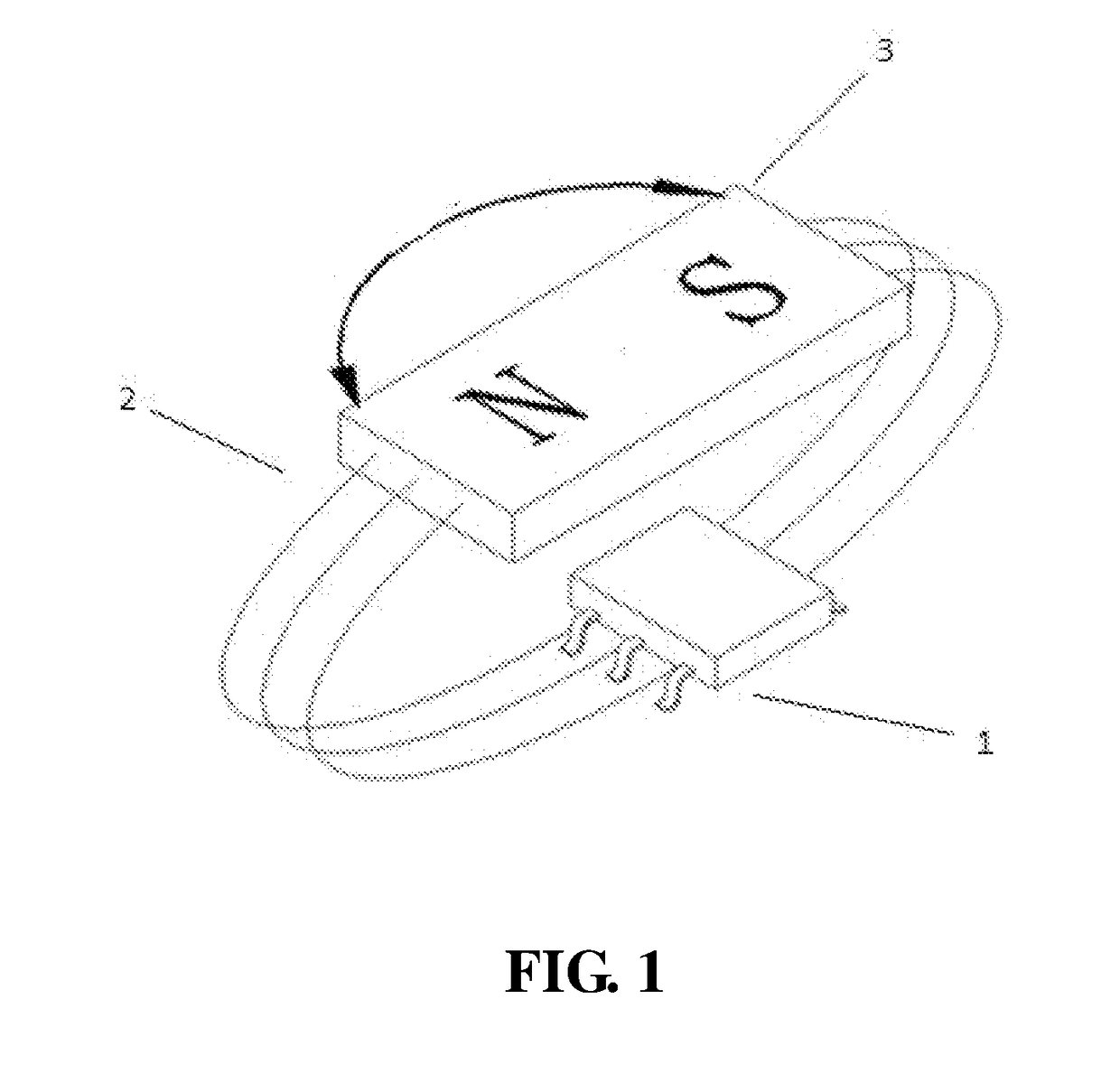Magnetoresistive angle sensor and corresponding strong magnetic field error correction and calibration methods
a technology of magnetic field and error correction, applied in the direction of electrical/magnetically converting sensor output, instruments, liquid/fluent solid measurement, etc., can solve the problems of large size, insufficient dynamic range, insufficient sensitivity, etc., to improve the measurement accuracy, reduce the measurement error, and expand the magnetic field application range
- Summary
- Abstract
- Description
- Claims
- Application Information
AI Technical Summary
Benefits of technology
Problems solved by technology
Method used
Image
Examples
Embodiment Construction
[0059]FIG. 1 is a schematic diagram of the working principle of a biaxial magnetoresistive angle sensor 1. The biaxial magnetoresistive angle sensor 1 includes two single-axis magnetoresistive angle sensors that are rotated by 90° with respect to each other, in order to measure the intensity of a magnetic field along an X-axis and a Y-axis. One of the single-axis magnetoresistive angle sensors for measuring a cosine waveform is referred to as a cosine sensor, and the other one for measuring a sine waveform is referred to as a sine sensor. The magnetoresistive (MR) angle sensor 1 is placed in a rotating magnetic field 2 generated by a magnet 3. By detecting resistance changes of the biaxial magnetoresistive angle sensor 1, the biaxial magnetoresistive angle sensor 1 can measure a rotation angle of the magnet 3. The resistance changes of the biaxial magnetoresistive angle sensor 1 vary according to a sine-cosine wave rule.
[0060]FIG. 2A is a sine-cosine output curve of the biaxial magn...
PUM
 Login to View More
Login to View More Abstract
Description
Claims
Application Information
 Login to View More
Login to View More - R&D
- Intellectual Property
- Life Sciences
- Materials
- Tech Scout
- Unparalleled Data Quality
- Higher Quality Content
- 60% Fewer Hallucinations
Browse by: Latest US Patents, China's latest patents, Technical Efficacy Thesaurus, Application Domain, Technology Topic, Popular Technical Reports.
© 2025 PatSnap. All rights reserved.Legal|Privacy policy|Modern Slavery Act Transparency Statement|Sitemap|About US| Contact US: help@patsnap.com



